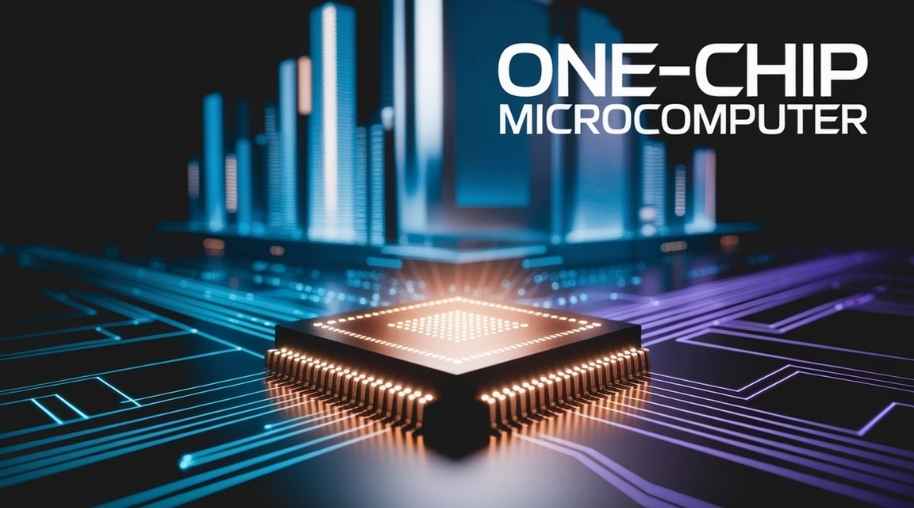SPOM Full Form-Self-Programmable One-Chip Microcomputer
by Shashi Gaherwar
0 2166
Self-Programmable One-Chip Microcomputer: Revolutionizing Embedded Systems

Introduction
The Self-Programmable One-Chip Microcomputer represents a significant advancement in embedded systems and semiconductor technology. Unlike traditional microcontrollers, which require external programming devices, self-programmable microcomputers have built-in functionality to store, update, and execute programs independently. This makes them highly efficient for IoT, automation, robotics, and smart electronics.
This article explores the architecture, working principles, advantages, applications, and future trends of self-programmable one-chip microcomputers.
What is a Self-Programmable One-Chip Microcomputer?
A self-programmable one-chip microcomputer is a microcontroller or microprocessor that can store, modify, and execute programs internally without requiring an external programming tool. These devices are used in real-time embedded applications, reducing complexity and increasing efficiency across industries.
Key Features
- On-Chip Program Memory: Eliminates the need for external memory modules.
- Self-Modifiable Code: Allows updates and reprogramming without additional hardware.
- Compact and Energy-Efficient: Ideal for portable and battery-operated devices.
- Built-In Peripherals: Includes timers, I/O interfaces, communication modules, and sensors.
- Real-Time Processing: Supports high-speed operations for embedded applications.
Architecture and Working Principle
The architecture of a self-programmable one-chip microcomputer is designed for independent and flexible operation. Core components include:
- Central Processing Unit (CPU): Executes instructions and manages operations with dynamic firmware modification.
- Non-Volatile Program Memory: Stores executable code in Flash/EEPROM/RAM, enabling self-programming.
- Input/Output Interfaces: Supports communication with sensors26px;">serial, parallel, and wireless connectivity.
- Memory Management Unit (MMU): Ensures efficient and secure memory access.
- Clock and Timer Modules: Enable precise timing for real-time operations.
- Power Management Unit (PMU): Ensures low power consumption for energy-efficient applications.
Advantages of Self-Programmable One-Chip Microcomputers
Self-programmable microcomputers offer numerous benefits for modern embedded systems:
- Flexibility and Updates: Enable on-the-fly firmware updates without external tools.
- Cost-Effective: Integrate multiple functions into a single chip, reducing complexity.
- Enhanced Performance: Optimized for high-speed and real-time processing.
- Energy Efficiency: Support low-power operation for IoT and battery-powered devices.
- Security and Reliability: Provide internal memory protection for robust firmware execution.
Applications of Self-Programmable One-Chip Microcomputers
These microcomputers are versatile and used across industries:
- IoT and Smart Devices: Power smart appliances, wearables, and sensors with remote updates.
- Industrial Automation: Used in PLCs, robotic arms, and control units for real-time monitoring.
- Automotive Electronics: Control engine management, cruise control, and infotainment systems.
- Medical Devices: Integrated into diagnostic tools and patient monitoring systems.
- Aerospace and Defense: Support navigation, flight controls, and secure computing.
Future Trends in Self-Programmable Microcomputing
Advancements in semiconductor technology will make microcomputers more powerful and intelligent:
- AI-Integrated Microcontrollers: Include AI units for intelligent decision-making.
- Edge Computing: Process data locally for IoT and real-time analytics.
- Advanced Security: Feature encryption and biometric authentication.
- Ultra-Low Power: Integrate energy-harvesting for self-sustaining IoT networks.
The Self-Programmable One-Chip Microcomputer is revolutionizing embedded systems, IoT, and automation by providing a compact, efficient, and upgradable solution. With growing demand for smart, secure, and real-time applications, these microcomputers will shape the future of autonomous and interconnected devices.
Further Learning Resources
If you’re passionate about building a successful blogging website, check out this helpful guide at Coding Tag – How to Start a Successful Blog. It offers practical steps and expert tips to kickstart your blogging journey!
For dedicated UPSC exam preparation, we highly recommend visiting www.iasmania.com. It offers well-structured resources, current affairs, and subject-wise notes tailored specifically for aspirants. Start your journey today!

Share:








Comments
Waiting for your comments